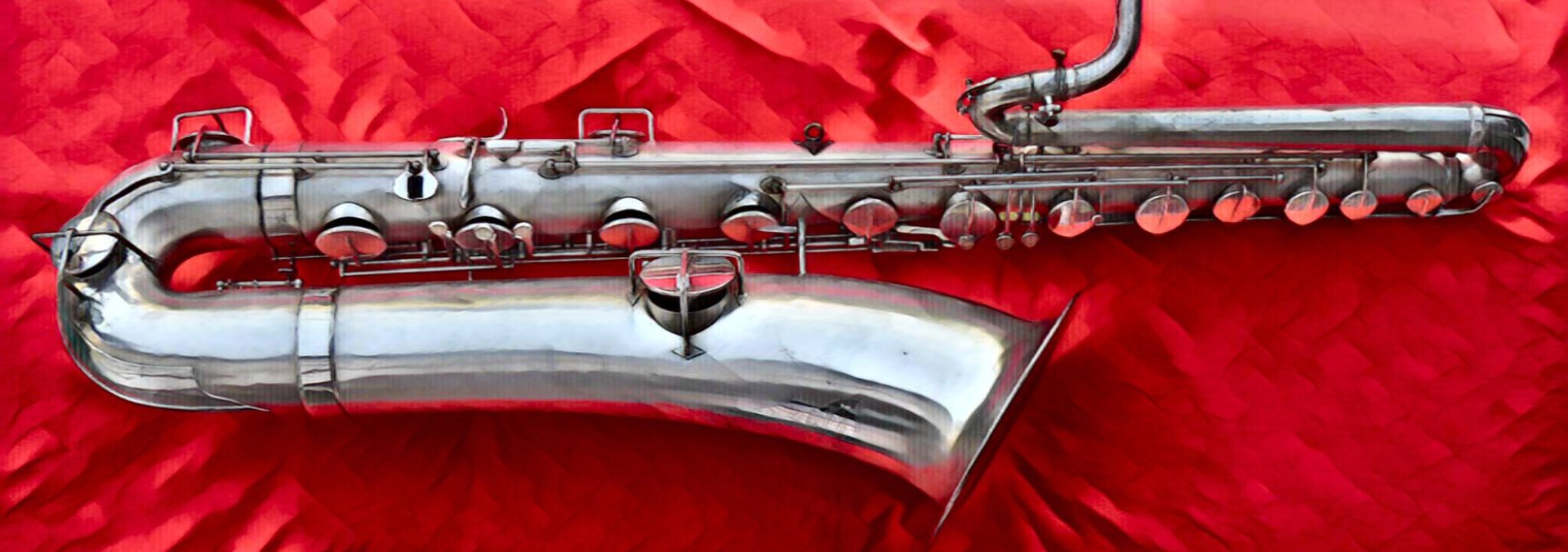I received a review of the original Rico Metalite mouthpieces the other day by a player with some considerable playing experience. He agreed that I could use his review, under the condition that I not publicly identify him.
A Review Of The Arnold Brilhart designed Rico Royal Metalite Soprano, Alto, & Baritone Saxophone Mouthpieces
By A Friend Of Bassic Sax
I recently purchased two “new old stock” Rico Metalite mouthpieces—a soprano & alto. Both were dated 1988 on the box.
I have bought the entire range of Metalites (except tenor sax) and they are all M9 tip openings. I haven’t bothered getting myself a Metalite tenor mouthpiece because I’ve already got a few Otto Link STMs in my drawer. As a result can’t comment on what the tenor versions are like.
However, I agree 100% with you re: the Metalite baritone version. My Metalite bari mouthpiece is an astonishingly good mouthpiece that really punches above its weight. I’m certainly not saying Metalites are the best mouthpieces in the world bar none, but in terms of sheer value for money they are almost impossible to beat.
Basically, I paid peanuts for a brand new Rico bari mouthpiece to use with my Yamaha YBS-61 bari. The mouthpiece sounds like it cost $300. Incredible, but true. I also have a Rico Graftonite B7 bari, and it’s much gentler.
The only downside to Rico mouthpieces is their appearance—they certainly aren’t pretty and I reckon that must put some people off. Still, looks aren’t everything and you shouldn’t judge a book by its cover. If you can look beyond visual appearances, these ugly duckling mouthpieces are truly excellent.
My Metalite M9 alto is as good as the rest of the bunch. It’s an incredibly loud mouthpiece (even for a Metalite), so it’s like having my own sound amplification system built in. It’s ideal for open air gigs where I need some extra punch.
Oddly enough, although the Metalite sounds well on my YAS-62 Mk 1—and some other professional-grade altos in my collection—it seems to work best of all on my spare back-up alto, a Yamaha AS-100. Strange but true. Fitted to my AS-100, the alto Metalite sounds really nice.
The more I think about it, the more puzzled I am that Rico don’t make Metalite alto mouthpieces any more. True, they have started making soprano, tenor and baritone Metalites again – but not the alto version. In my opinion that’s a great pity because fitted to the right saxophone, Metalite alto mouthpieces can sound lovely
I’ve grown very fond of my M9 Metalite soprano. I actually prefer it to an Otto Link STM (same tip opening) that I borrowed for the weekend to try on my soprano. Given the massive difference in price between these two mouthpieces, that pretty much says it all.
In my opinion, Rico Graftonites and Metalites are the best value-for-money in saxophone mouthpieces. Don’t get me wrong, I’m still a big fan of Otto Link STMs etc, but of course there’s a big difference in price. For those on a budget, or who simply want to try something slightly different at a price that won’t be painful, Rico mouthpieces are well worth a go.
The most important thing about Ricos is that they give students inexpensive access to good-quality mouthpieces that aren’t going to harm their technique, hold them back, or shame them if they continue to play Ricos after developing their “chops”. Me, I’ve been playing the sax since 1978 and I’m still learning.
I’m always wryly amused when I hear “experts”—who’ve been playing the alto for all of 2 years—saying that Rico mouthpieces are no good and the best mouthpieces are made by XYZ etc. But then, I’ve lost count of the times I’ve seen some know-it-all with his shiny new Selmer series III get blown out of the water by a more experienced player blowing a weathered old Yamaha YAS-21 which cost a fraction of the price. Those less experienced players don’t seem to realize that it’s all about having good chops and working on your technique. (Emphasis added.)
Amen to that. It’s not the gear that makes the player. It’s the player that makes the most out of the gear.
It’s like I wrote about in my article The Source Of Tone: Where Does Our Tone Come From? How Do We Change It?
Our unique, individual sound originates in our chest cavities…
What is difficult for most players to get their head around, is that the further you get away from the origin of the tone, the less tinkering, or making changes to gear, is going to have an effect on your saxophone tone.



